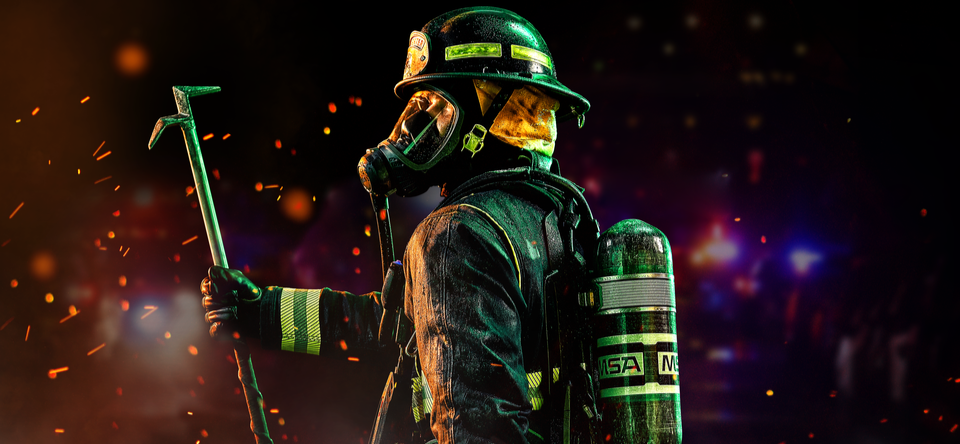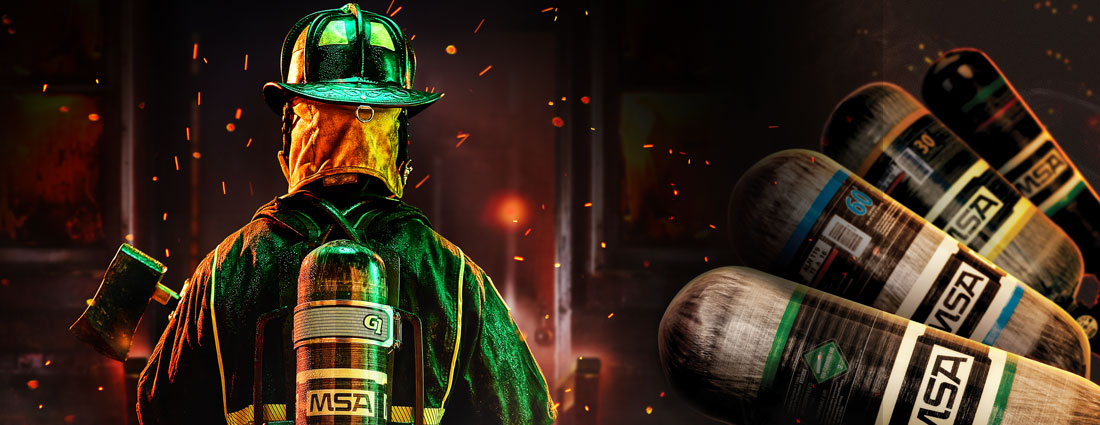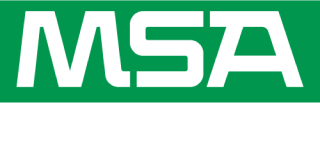
Kevin Sofen, FireRescue1 BrandFocus Staff
These Bluetooth-enabled SCBA systems that meet requirements of the new NFPA 1970 are a leap forward in fireground communication
Every firefighter knows the drill: Each call is unpredictable, every second is critical, and there’s no margin for error. As external threats evolve (like navigating wildfires or lightweight construction material), so must the equipment firefighters rely on to stay safe and connected in the most challenging environments. MSA recognizes this responsibility, pioneering solutions like Bluetooth-enabled SCBA systems that currently meet certain requirements of the new NFPA 1970 standard – a leap forward around fireground communication.
In Baltimore County, Maryland firefighters Terry Berkeridge and Kevin Duell have seen firsthand how improved communication can transform the job. Before integrating Bluetooth, they describe a fireground where crucial radio messages often drowned in static, background noise or weak connections – a situation that shifted from “90% bad to 90% good” once the new tech was deployed. Their experiences reveal how advanced SCBA communications aren’t just about meeting a standard; they’re about empowering firefighters to do their jobs more safely, efficiently and with greater confidence.
Throughout this article, we’ll explore how the NFPA 1970 standard and today’s MSA G1 SCBA are actively meeting – and exceeding – the needs of firefighters. This shared mission sets a new baseline for firefighter safety and communication, helping to ensure every shift ends with firefighters returning home safely.
NFPA 1970, Explained – Minus the Jargon
The NFPA 1970 standard (a consolidation of four standards including NFPA 1981 and 1982 for SCBA) marks a step forward in firefighter safety, zeroing in on what matters on the job: reliability, clarity and durability. This new standard is developed not just to meet but to anticipate the needs of today’s fire service, reflecting a practical understanding of how equipment must perform under intense, unpredictable conditions.
The updates in NFPA 1970 focus on making SCBA (self-contained breathing apparatus) more than just a piece of life safety equipment; they transform it into a highly communicative, versatile tool built for operational resilience. For firefighters, this translates to SCBAs offering both safety and added functionality in one package. The 1970 standard requires enhancements that ensure firefighters can count on their gear for clear communication and usability even in extreme conditions. This means incorporating innovations that reduce weak points, such as audio interference and prolonged cleaning requirements, which can compromise safety.

Like all standards, NFPA 1970 is developed based on input from firefighters – those who understand what it’s like to be in the heat of the moment. The standard prioritizes these real-world insights thanks to feedback from firefighters and incident commanders who have experienced firsthand the drastic difference clear communication makes.
Why These Changes Matter for Firefighters
Each requirement in the NFPA 1970 standard directly addresses the on-the-job realities firefighters face. For SCBA, from clear Bluetooth communication to easily cleaned soft goods, these changes put firefighters’ health and safety first. As the experience of Baltimore County Fire Department (BCoFD) shows, these innovations in SCBA technology aren’t “nice-to-have” enhancements; they’re essential for safer, more efficient fireground operations.
NFPA’s standards committees, composed of end users, manufacturers and industry experts, ensure the standard isn’t developed in a vacuum. This balanced approach ensures firefighters’ voices are central to the standards being set – standards that improve their lives, help protect their health and safety and respect the demands of their work.
Collaborating with Departments to Enhance SCBA Communication and Its Impact on Firefighter Operations
True progress in firefighter safety equipment innovations begins with listening to those who put their lives on the line. MSA embraces this approach while developing all new products, including the G1 SCBA, by partnering closely with several departments and numerous firefighters. This approach continues after new products are introduced with ongoing check-ins with departments like BCoFD to gather feedback used to develop future product enhancements. The Baltimore County team’s firsthand experiences and candid feedback were critical in helping to shape practical solutions, particularly in refining the Bluetooth communication capabilities essential for clear, reliable transmissions on the fireground.
The process began with understanding the communication obstacles Baltimore County firefighters faced daily: garbled transmissions, interference and the risk of missed commands. MSA engineers took these issues seriously, working with the department to address them. Berkeridge captured the significance of this partnership when he described the shift in communication capabilities as “a game-changer.” “Before, we were fighting feedback, echoes, even water getting in the mics. Now, everyone sounds sharp, and it’s one less thing to worry about when lives are on the line,” he explained.
This iterative collaboration with multiple departments led to tangible improvements. MSA fine-tuned features like microphone placement and integrated robust Bluetooth systems directly into the mask-mounted regulator as standard and not an add-on. As Duell put it, “With Bluetooth, it’s like hitting a switch – no more holding up the mic, no more feedback and background noise. You just key up and speak and it’s clear every time.” These advancements ensured communication wasn’t just functional in a controlled test but performed seamlessly in the unpredictable, high-stress environment of the fireground.
The partnership with BCoFD and other departments extended beyond communication improvements, focusing on essential aspects like cleanliness and ease of maintenance. Firefighter feedback led MSA to enhance the G1 SCBA’s removable soft goods, making thorough cleaning simpler and more effective. These durable, easy-to-remove components streamline decontamination, helping reduce the risk of exposure to harmful carcinogens encountered on the fireground.
Enhancing Daily Operations and Safety
The advancements brought by Bluetooth communication aren’t just technical updates – they transform daily firefighting operations. For Baltimore County’s crews, the move to Bluetooth-enabled SCBA systems has reshaped how teams communicate and coordinate during emergencies.
“When you’re on the radio, clarity isn’t a luxury; it’s a necessity,” said Duell. This shift to dependable, clear communication eliminates the frustration of garbled messages and missed critical commands in scenarios where every second counts. In the heat of the moment, smooth communication can be the difference between a controlled response and chaos.
These innovations mean fewer distractions and more efficient operations. Firefighters can navigate complex situations without worrying if their or incident command’s messages will be understood. This confidence in equipment frees teams to focus on their mission, reducing hesitation and improving decision-making.
BCoFD’s firsthand experience highlights that reliable communication is not an optional feature – it’s essential to modern firefighting. The G1 SCBA’s Bluetooth capability redefines fireground communication, allowing teams to operate without added burdens. These practical, field-tested innovations empower firefighters to perform their best, knowing their gear supports them through the most challenging moments.
The Future of Firefighter Safety and Technology Is Now
The evolution of NFPA 1970 and MSA’s ongoing commitment to develop innovative solutions that address real-world challenges help advance firefighter safety today and in the future. Departments should explore these advancements to enhance their safety programs and streamline operations. Embracing SCBA technology like today’s G1 SCBA means more reliable communication and health-focused features for your fire department.







